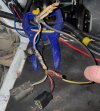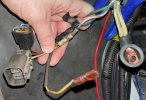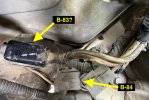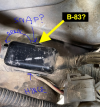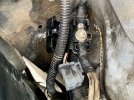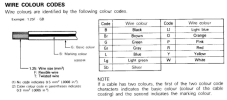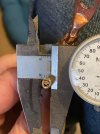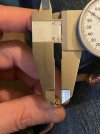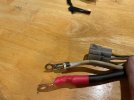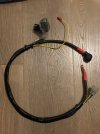Background: I have a D4BF engine, so I have 2 types of alternator connections have been grafted to the existing wiring harness, plus the two thick wires that bolt to the alternator output. This weekend, whilst changing out the alternator, the copper crimp eyelet terminal broke. So, I needed to crimp on a new one. No biggie, but as I did I noticed an "extra" wire and have NO idea what this is for?
So, here's the wiring diagram.
Any guesses as to where and WTF this wire is for?
So, here's the wiring diagram.
With the colors coded in Blue in the image, and the FOUR wires that connect to the alternator.
But, this is what I have in that wire bundle...Blue, red/white, 2 thick white and some weird yellowish white with a female spade connector?
And the after picture with my new crimp eyelet terminal (and alternator boot) installed.
Any guesses as to where and WTF this wire is for?
Last edited:


